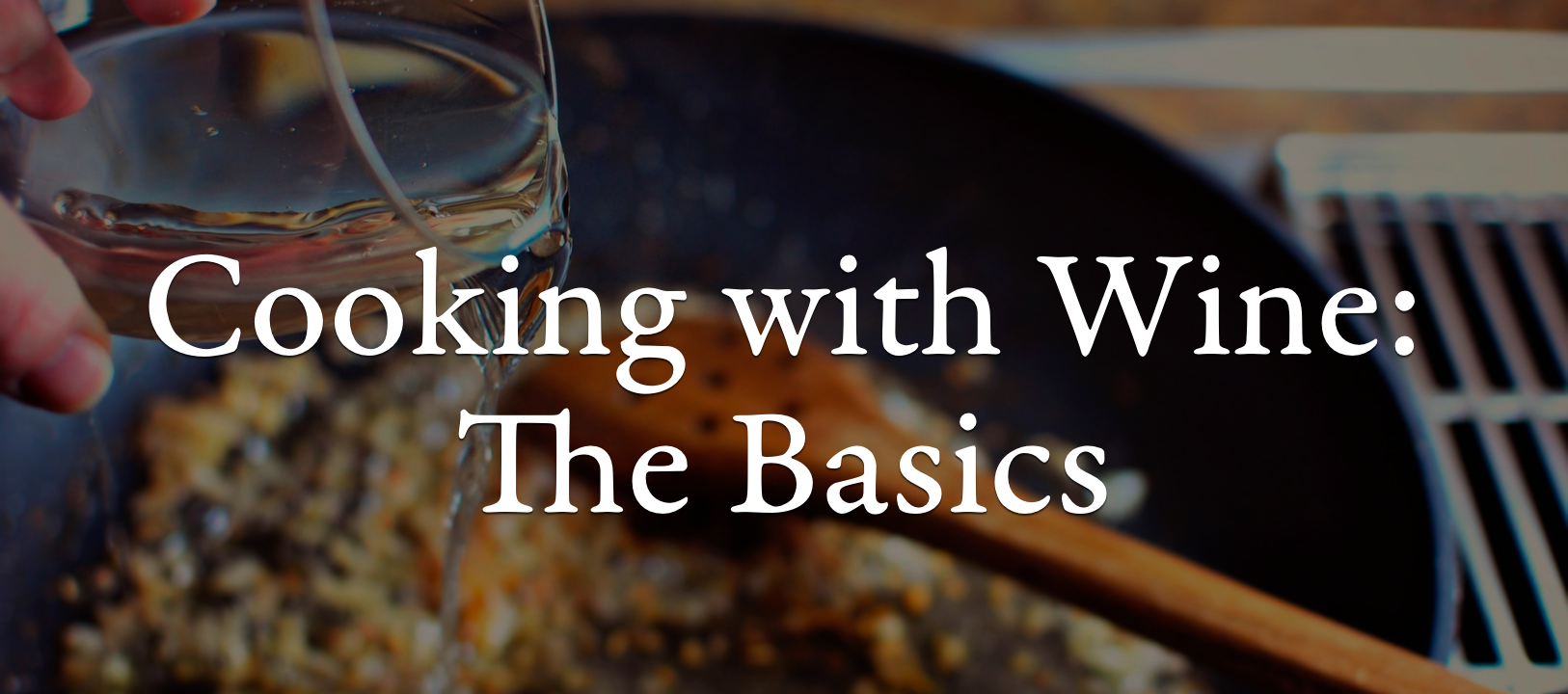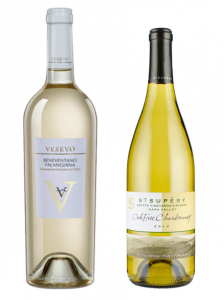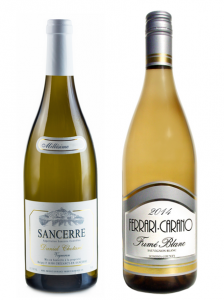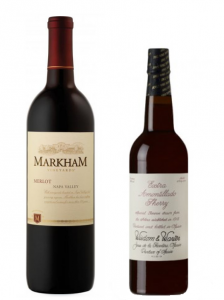
If you’re like me, you don’t always finish every bottle of wine that you open- you end up recorking it and sticking it the fridge. More often than not, these bottles end up as ingredients in the next night’s dinner. Adding wine to a dish can add a host of new flavors. Adding wine is the perfect way to turn a simple weeknight meal into something special.
The key when cooking with wine is to only use a bottle of quality wine. This doesn’t mean that you should go out and spend your whole paycheck on bottle of wine just to pour it into your spaghetti sauce, but it does mean that you should get a wine that you’d be happy drinking on its own. Remember, whatever wine you use will end up dramatically affecting the dish, so it’s best to choose something you enjoy. If I don’t have any partial bottles to use, I’ll serve whatever is left over from cooking to pair with the dish.
Wine can be added to many dishes, but knowing when to add the wine can be a little tricky. You should treat wine much like you would any other spice or herb, in that too much of it won’t be noticeable, but too much could ruin a dish. You’ll want to add the wine before or during the actual cooking time. Adding it too late in the process doesn’t allow the alcohol to cook off and can your entire dish a harsh taste. For most recipes, you’ll only want about ¼ of a cup.
When it comes to choosing which wine to add to a specific dish, the combinations are almost endless. As a rule of thumb, I generally pair red wines with red meat and tomato based dishes, while using white wines for vegetables and seafood. It’s also a safe bet to use wines in dishes that are from the same region. For example, an Italian sangiovese would be excellent in a hearty pasta dish.
Poached Salmon
1 lb of salmon
1 large white onion
2 lemons
Dill
1 bottle of aromatic white wine

Slice the onion and place it on the bottom of a large pan. Rub the salmon with salt and pepper, then place on the onion skin side down, then sprinkle with dill. Slice one of the lemons into wheels and lay over the salmon. Cut the second lemon into halves, and drizzle the juice of one half over the salmon. Fill the pan with 1 bottle of white wine, if the salmon is not covered, top off with water. Turn on the heat until boiling, and then remove from heat. Cover the pan and let rest for 15 minutes. Drizzle the juice of the second lemon half over the fish once it’s plated.
For this recipe, I’ve used a number of white wines. I’ve found that an Italian falanghina, such as the Vesevo Beneventano falanghina tastes best to me, but I think an unoaked chardonnay gives the fish an added zest that I really enjoy. St. Supéry’s unoaked chardonnay is one I use all the time.
Braised fennel and white beans
4-5 fennel bulbs
2 tablespoons of olive oil
Salt to taste
2 tablespoons of honey
1 lemon, cut into wedges
¼ cup dry white wine
2 cups cooked white beans (cannellini, navy, etc)
Dill

Cut the fennel bulbs into wedges and let them cook in the olive oil over medium heat for 2-3 minutes until they begin to caramelize. Stir and let them cook through for another 2-3 minutes. Then add the lemon wedges, salt, honey, and wine*, stirring to combine. Let the wine reduce for 1-2 minutes before adding in the beans. Stir again and let cook for 5 minutes before serving. Add dill and olive oil for garnish.
I think sauvignon blanc works best here. A good French Sancerre will add a racy, tangy element to the honey and fennel, but it might be overpowering for some palates. When I choose to use a Sancerre, I always use one from Daniel Chotard. I’ve found that a well-oaked sauvignon blanc from California, such as Ferrari Carano’s fumé blanc seems to work for my guests. The oak cuts down the wine’s natural acidity and adds a tiny hint of vanilla to the dish’s natural flavor.
Pasta sauce with meatballs
Meatballs (store bought or your own recipe is fine)
Tomato based pasta sauce (store bought or your own recipe is fine)
¼ to 1 cup red wine of choice

This is my favorite way to punch up a pasta dish, especially on a busy weeknight when I haven’t had the time (or energy) to make my own sauce. You can even purchase store-bought meatballs for this so long as they aren’t already cooked. Take your uncooked meatballs and place them into a saucepan and fill it with wine so that the meatballs a quarter to half submerged. The amount of wine needed will vary. Simmer in the wine for about 10 minutes and then add your sauce to the pan to continue simmering until ready, usually about 25-30 minutes.
You can literally use any wine you want for this recipe. I’ve used cabernet sauvignon, sangiovese, and syrah and it’s come out different and delicious each time. I seem to always have a bottle of merlot on hand, especially Markham merlot, so it gets used most often. My personal favorite combination is a chorizo meatball simmered in Wisdom & Water Extra Amontillado sherry along with my own personal sauce recipe, but this recipe is so easy that you can do literally anything to it and come out with an excellent dinner.
